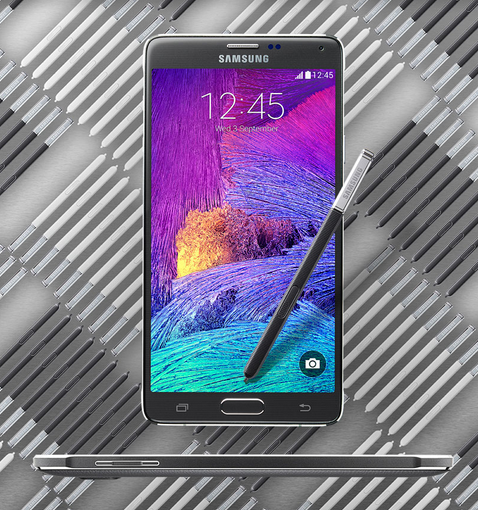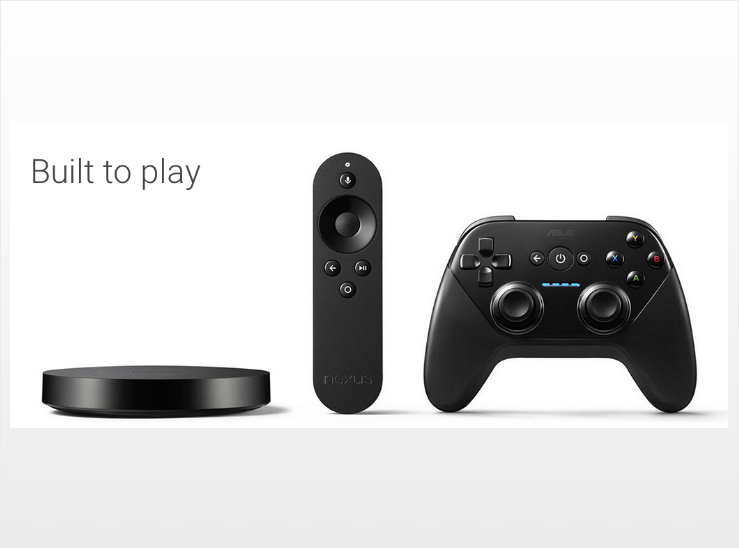Google, Samsung And The Mobile Future of Entertainment
With deep apologies to Shakespeare, would a phone by any other name call so sweet? That was the question, more or less, for me when I tried out phones and other Android-based devices from Google and Samsung in recent days. I wanted to explore some of the most notable mobile devices made by two giant companies not named Apple, and see what they suggest about where entertainment is headed.

As this year’s holiday season hits full frenzy today, Samsung’s Galaxy Note 4 and Google’s Nexus 6, (along with two other Android-based devices from Google, the Nexus 9 tablet and the Nexus Player) will be among those helping shape how entertainment is consumed, especially by audiences under 25 that have proven so elusive to Hollywood.
Increasingly, those people are watching (and creating) short-form videos and other content on their increasingly large and capable smartphones, typically powered by the Android operating system from Google that is now on about five in six smartphones sold worldwide.
These devices are part of a new product type, the ‘phablet,’ between a phone and a tablet in size, that has forced even mighty Apple to reverse its design course, making its superb new iPhone 6 and 6 Plus models much larger than previous generations.
As a result, the 6 Plus, the Note 4 and the Nexus 6 are roughly the same size, give or take a few millimeters. Their screen sizes are all between 5.5 and 6 inches in size (measured diagonally like a TV screen). The Apple product continues to earn glowing reviews for build quality, software integration and array of apps and games. But as the Note 4 and Nexus family show, there are plenty of top-notch Android-based challengers, and more people making and watching mobile content on devices such as those.

The Galaxy Note 4 has already had some significant time in Hollywood’s eye, pushed aggressively by Samsung at many entertainment venues. Ellen DeGeneres pulled out a Note 4 at the Oscars when she took the Selfie Seen Around The World. More recently, Samsung took over a Beverly Hills mansion for a long weekend of parties and events with young Hollywood “influencers” such as Rumer Willis.
And at last weekend’s American Music Awards, Samsung and Dick Clark Productions handed out Note 4s to celebs and other influencers to grab photos on the red carpet and in the Nokia Theater, all to be posted to an AMA-themed ‘story’ site on Snapchat, the messaging app used by so many Millennials.
The Note 4, as its name suggests, comes with a stylus that can be used to jot notes, draw and annotate images and much more. It comes with a gorgeous 5.7-inch screen, in so-called “quad HD” resolution, and has a solid camera that captures a very good 16 megapixels in still images.
Samsung, like many Android hardware makers, adds a variety of its own apps and capabilities. Some of those custom apps work with the various health, movement and security sensors built into the machine. One particularly nifty ability, a split-screen function, takes advantage of the larger screen by allowing multiple programs to be viewed at once. That capability can make the Note 4 a real alternative to a full-sized tablet or even an Ultrabook PC for light users. Given the flat sales recently for iPads and other tablets, clearly many people agree.
The real spec monster though, is the Nexus 6, which became available just a few weeks ago (the Nexus 9 tablet and the Nexus Player came out at about the same time). All three of those devices are “reference” models, built for Google by companies such as former Google subsidiary Motorola, Asus and HTC. In part, the company commissions the high-end devices to show developers and bleeding-edge tech adopters what’s possible with current technology and its very latest operating system.
Unlike the Note 4, the Nexus devices use Android 5.0, the newest version of the operating software. It is nicknamed Lollipop and is just terrific, closing the gap in usability with Apple’s latest version of iOS. The Nexus 6 also has a Quad HD-resolution screen that’s even larger than the Note 4, coming in at a hair under 6 inches.
And its rear-facing camera can capture 4K ultra-high-definition video, somewhat astonishing for a handheld device. Lots of 4K-resolution TVs will be sold this holiday season, as prices continue to plunge below $1,000 for good-sized screens. And content to fill those screens, though scarce now, will continue to be created. Right now, one of the few places to see and distribute 4K content is through YouTube, which also is owned by Google.
YouTube already has a number of channels devoted to 4k video, including one from Red, the 4K camera maker, as well as shows shot with Red cameras, such as YouTube Nation from AwesomenessTV (owned by DreamWorks Animation). And this is where devices such as the Nexus 9 tablet, with its beefy 64-bit Tegra processor, and particularly the Nexus Player come in.

Both also have the Lollipop operating software, and more importantly, the $99 Nexus Player is designed to put mobile apps, video, games, photos and more on a TV screen, using what the company is calling Google Cast. Being able to “throw” all kinds of content from a smartphone or tablet to the Player, where it can be viewed on a full-sized TV, will greatly extend the capabilities of the Nexus 6 and 9, and the kinds of content their users can create and enjoy.
And given the company’s new-found marketing emphasis on its Google Play store – where it sells apps, games, music, movies and TV shows – the Player can be a handy device for anyone wanting to get their Android experiences and all kinds of content onto a big screen with few hassles.
There are a few caveats here. Much as I like these devices, there are reasons many potential customers may resist becoming all Google, all of the time. Unlike Apple, the company makes its money targeting advertising ever more precisely on its users, based on what they do and where they go online and off.
The more you use your Android devices, Google Play, Gmail, the Google search engine, Google Docs, YouTube, Google+ and its many other products, the more the company knows about you. If you’re comfortable with that, this is a great alternative.
It’s also important to note how big these phablets are compared to a more commonly sized phone. I’m a big man with large hands and even still, both the Nexus 6 and Note 4 are big to me, never mind to someone of more petite size. They may be just too much for you.
And though the Note 4 is an impressive piece of kit, Samsung adds lots of its own apps, as do most of the wireless carriers, which together kludge up the Android experience in a way that just doesn’t happen with Apple’s devices.
So what’s the future look like? Mobile devices big enough to make tablets and PCs less necessary. The ability to push all your content onto a really big high-quality screen when you want, whether it’s a movie, a YouTube short or a game. And the ability to create, edit and distribute high-quality content on the fly, from anywhere you can get a signal. Are you ready for the new world? What’s it going to mean for the content you and your company create? Let me know what you think.
Related stories
Steve Jobs Film Moving From Sony; Will Universal Make The Movie?
John Cleese, Tech Startups, 'How Google Works': Michael Shamberg's Hot Reads
YouTube Launching Subscription Music Service Tied To Google Play
Get more from Deadline.com: Follow us on Twitter, Facebook, Newsletter

